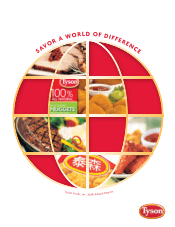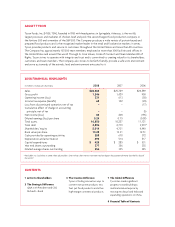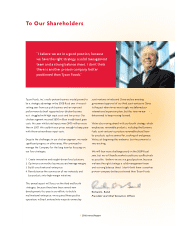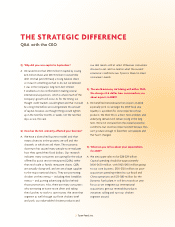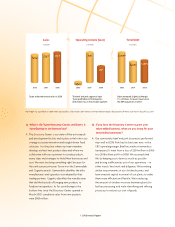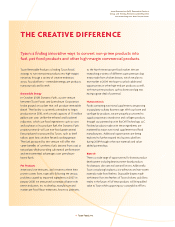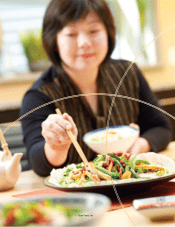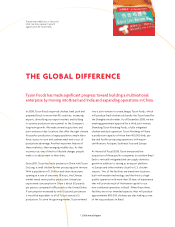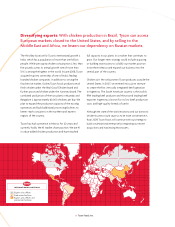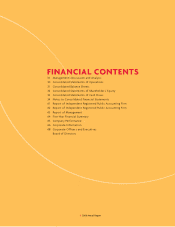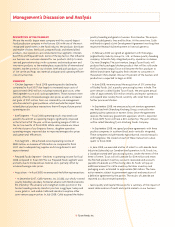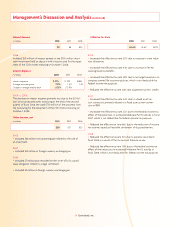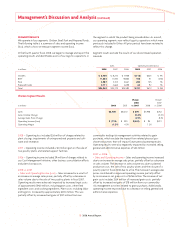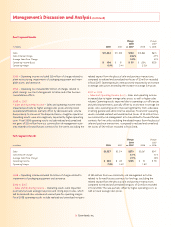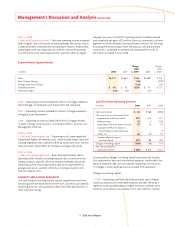Tyson Foods 2008 Annual Report Download - page 9
Download and view the complete annual report
Please find page 9 of the 2008 Tyson Foods annual report below. You can navigate through the pages in the report by either clicking on the pages listed below, or by using the keyword search tool below to find specific information within the annual report.
The growing middle class in China and
other countries represents growth
opportunities for Tyson Foods.
THE GLOBAL DIFFERENCE
Tyson Foods has made signifi cant progress toward building a multinational
enterprise by moving into Brazil and India and expanding operations in China.
In 2008, Tyson Foods exported chicken, beef, pork and
prepared foods to more than 90 countries. Increasing
exports, diversifying our export markets and building
in-country production are essential to the Company’s
long-term growth. We made several acquisitions and
joint ventures in key locations that offer the right climate
for poultry production, a large population, ample labor
force, access to corn and soybean meal and a cost of
production advantage. Another important feature of
these markets is their emerging middle class. As their
incomes rise, one of the fi rst lifestyle changes people
make is to add protein to their diets.
Since 2001, Tyson has had a presence in China with Tyson
Da Long, a small chicken further processing joint venture.
With a population of 1.3 billion and chain restaurants
opening at a rate of one every 18 hours, the Chinese
market needs more poultry production. Annual per
capita meat consumption in China is about 20 pounds
per person, compared to 89 pounds in the United States.
If consumption increased by only 10 pounds per person,
it would be equivalent to all of Tyson’s annual U.S.
production. To serve this growing market, Tyson entered
into a joint venture to create Jiangsu Tyson Foods, which
will produce fresh chicken sold under the Tyson brand for
the Shanghai retail market. As of December 2008, we are
awaiting government approval for a third joint venture,
Shandong Tyson Xinchang Foods, a fully integrated
chicken and duck operation. Tyson Xinchang will have
a production capacity of more than 400,000 birds per
day and further processing operations with export
certifi cations for Japan, Southeast Asia and Europe.
At the end of fi scal 2008, Tyson announced the
acquisition of three poultry companies in southern Brazil.
Each is vertically integrated and can supply domestic
growth in addition to serving as an export platform
to Europe and other markets closed to U.S. chicken
imports. Two of the facilities are brand new locations
built with modern technology, and the third is a high-
quality operation with more than 30 years of experience
that will provide much of the human capital to our
new combined operations in Brazil. When these three
facilities are at our intended capacity, they will produce
approximately 800,000 chickens per day, making us one
of the top producers in Brazil.
7 2008 Annual Report

